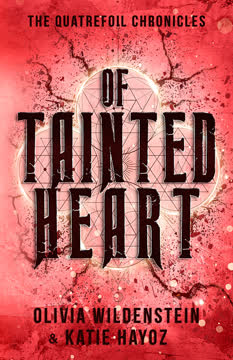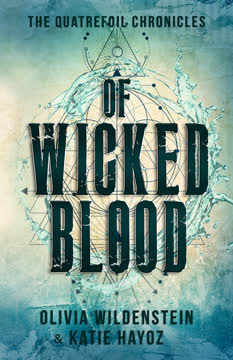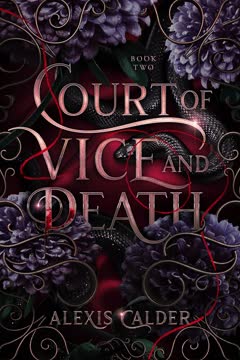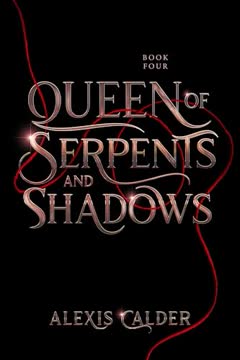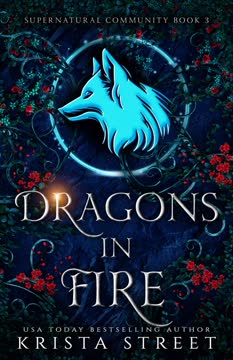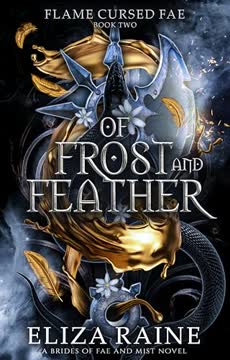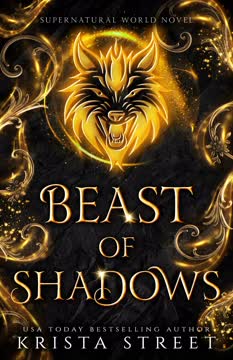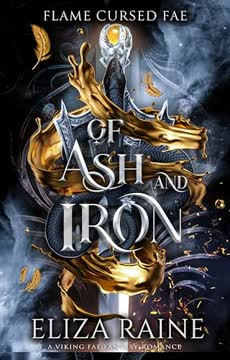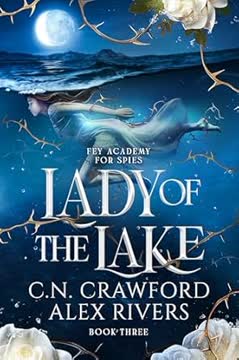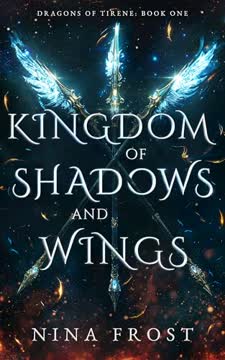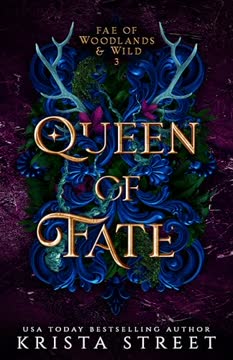Plot Summary
Aftermath and New Beginnings
In the wake of their harrowing quest, Cadence and Slate find themselves in a fragile peace, their lives forever altered by the magic and trauma they endured. The Bloodstone ring is off Slate's finger, but the cost of their victory lingers. Cadence is haunted by what was lost and what could have been, while Slate, now free from his curse, struggles to find his place in Brume. Their relationship deepens, but the scars of the past—both physical and emotional—remain. As they try to settle into a semblance of normalcy, the town's wounds are slow to heal, and the specter of magic's absence looms over them. Yet, hope flickers: friendships are rekindled, and the possibility of a future together begins to take root, even as the past refuses to stay buried.
The Bloodstone's Shadow
The Bloodstone, once a symbol of hope and power, now represents guilt and unfinished business for Cadence. Despite her victory, she is tormented by the knowledge that her actions failed to restore magic or reverse the town's curses. The ring's history—its role in her mother's death and the suffering of others—becomes an obsession. Cadence's desire to try again is met with resistance from those she loves, especially Slate and her father, Rainier. The tension between longing for redemption and the fear of repeating past mistakes drives a wedge between Cadence and her allies, setting the stage for new trials and the resurfacing of old wounds.
Unraveling Secrets
As Cadence and Slate dig deeper into the mysteries of the Quatrefoil and the town's history, secrets begin to surface. The theft of Camille's translations, the true nature of the curses, and the involvement of trusted figures like Rainier and Nolwenn are slowly revealed. The group's investigation uncovers a web of lies, betrayals, and cover-ups that implicate not only the living but also the dead. The realization that human malice, not just magic, is at the heart of Brume's suffering forces Cadence to confront uncomfortable truths about her family and herself. The search for answers becomes a quest for justice, but the cost of truth may be higher than anyone anticipated.
Trials of the Heart
The emotional bonds between the main characters are strained as the consequences of past actions ripple through their lives. Cadence's relationship with Slate is tested by jealousy, guilt, and the resurfacing of old crushes. Adrien's grief and anger over his mother's death threaten to consume him, while Gaëlle's longing for her lost husband and the return of her father pull her in conflicting directions. The group's unity is challenged by personal desires and the weight of collective responsibility. As new magical trials begin, each character must decide where their loyalties lie and what they are willing to sacrifice for those they love.
The Quatrefoil's Challenge
The Quatrefoil, far from being appeased, unleashes a fresh set of challenges upon Brume. Each kelc'h (circle) of the town is beset by a unique magical curse—zombies, plagues of spiders, shifting streets, and more. The diwallers (guardians) must solve increasingly complex puzzles, often at great personal risk, to save the townspeople and themselves. Failure results in dire consequences: loved ones are turned to stone, cursed, or lost. The trials force the group to confront their deepest fears and insecurities, and the line between ally and adversary blurs as the stakes rise. The clock is ticking, and the cost of failure grows with each round.
Cursed and Forgotten
In a cruel twist, Slate becomes the victim of a new curse: he is erased from the memories of everyone in Brume, even those he loves most. As a "stranger," he must find a way to help the group without revealing his true identity, enduring heartbreak as Cadence and Bastian treat him as an outsider. His journey is one of resilience and ingenuity, as he navigates the trials, uncovers hidden truths, and fights to reclaim his place in the world. The pain of being forgotten is matched only by his determination to protect those he loves, even if it means sacrificing his own happiness.
The Labyrinth Below
The final magical trial separates the diwallers, forcing each to confront their element in isolation. Cadence is plunged into a labyrinthine catacomb, surrounded by the bones of the past and haunted by the specter of failure. Her journey through the maze is both physical and psychological, as she battles claustrophobia, despair, and the weight of her family's legacy. The trial becomes a test of willpower and self-belief, as Cadence must find her own way out, guided only by her instincts and the faint hope of reunion. The experience leaves her changed, but also stronger and more determined than ever.
The Mirror World
In a surreal twist, the diwallers are transported to an alternate Brume—a world where magic never existed, the dead are alive, and old wounds are healed. Cadence is reunited with her mother, Gaëlle with her husband, and Slate with his parents. The temptation to remain in this perfect world is strong, but the cost is the loss of their true selves and the abandonment of their responsibilities. The group must choose between the comfort of illusion and the pain of reality, ultimately deciding to return and face the consequences of their actions. The mirror world serves as both a reward and a warning, highlighting the dangers of wishful thinking and the necessity of courage.
Truths Unearthed
The final pieces of the puzzle fall into place as Cadence confronts her father, Rainier, and uncovers the full extent of his crimes. The murders of Amandine, Camille, and Marianne are laid bare, and the true nature of the Bloodstone's curse is revealed. The confrontation is raw and devastating, shattering Cadence's remaining illusions and forcing her to choose between vengeance and justice. The group must reckon with the human capacity for evil, realizing that magic is not the only force capable of destruction. The truth, once unearthed, cannot be buried again.
The Last Trial
The story reaches its emotional and moral climax as Rainier and Geoffrey face off atop the clinic, each consumed by guilt, rage, and the desire for retribution. Cadence, Slate, and Adrien are caught in the crossfire, struggling to prevent further tragedy. The confrontation ends with both men's deaths, a final act of violence that brings closure but not peace. The town mourns its fallen leaders, and the survivors are left to pick up the pieces. The last trial is not one of magic, but of the human heart—testing the limits of forgiveness, the cost of truth, and the possibility of redemption.
Magic Restored, Wounds Remain
As the new moon rises, the Bloodstone's curse is finally broken, and magic is restored to Brume. The diwallers receive their powers, and the town's curses are reversed: the petrified are revived, the dead return, and hope is rekindled. Yet, the scars of the past remain, and the survivors must learn to live with the consequences of their choices. Cadence and Slate, now united in love and purpose, look to the future with cautious optimism. The restoration of magic is both a blessing and a burden, offering the promise of healing but also the risk of repeating old mistakes.
A New Dawn in Brume
Five years later, Brume has become a beacon of magic, attracting hopefuls from around the world. The diwallers serve as the town's guardians and teachers, guiding new mages through the Quatrefoil's trials. Cadence and Slate, now married and expecting a child, have found peace and purpose in their roles. The town is transformed, but the lessons of the past are not forgotten. The legacy of pain and resilience shapes the new generation, and the promise of magic is tempered by the wisdom of experience. Brume stands as a testament to the power of love, sacrifice, and the enduring human spirit.
Epilogue: The Mage's Legacy
In the epilogue, the Quatrefoil's trials have become a rite of passage for those seeking magic. The diwallers, now leaders and mentors, watch as a new generation faces the challenges that once nearly destroyed them. The world has changed, but the core truths remain: magic is a force to be respected, the past cannot be erased, and the future is shaped by the choices of the present. Cadence and Slate's daughter is born into a world of possibility, her parents determined to guide her with the hard-won wisdom of their own journey. The story ends with hope, tempered by the knowledge that every gift comes with a price.
Characters
Cadence de Morel
Cadence is the emotional and moral center of the story, a young woman burdened by guilt, loss, and the weight of her family's legacy. As the daughter of Rainier and Amandine, she is both a victim and an inheritor of Brume's magical curses. Her journey is one of self-discovery, as she grapples with the consequences of her choices and the truth about her parents. Cadence's love for Slate is a source of strength and vulnerability, and her loyalty to her friends is unwavering. She is resourceful, compassionate, and determined, but also prone to self-doubt and despair. Over the course of the trials, Cadence evolves from a passive participant to an active agent of change, ultimately embracing her role as a guardian of magic and a leader in the new Brume.
Slate Ardoin (Rémy Roland)
Slate is a complex figure: orphan, con artist, and ultimately, the true Water diwaller. Cursed to be forgotten by all, he endures profound loneliness and heartbreak, especially as Cadence and Bastian lose all memory of him. Despite this, Slate's ingenuity, humor, and fierce loyalty drive him to help the group, even at great personal cost. His relationship with Cadence is passionate and transformative, offering him a sense of belonging he has never known. Slate's journey is one of reclamation—of his identity, his family, and his place in the world. He is both a trickster and a hero, shaped by trauma but defined by his capacity for love and sacrifice.
Rainier de Morel
Rainier is a study in contradictions: a loving father and a ruthless manipulator, a victim of magic and a perpetrator of violence. His obsession with restoring magic and undoing his own curse leads him to commit unspeakable acts, including the murder of his wife, Amandine, and the orchestration of other deaths. Rainier's relationship with Cadence is fraught with love, guilt, and denial. He is both a tragic figure and a villain, undone by his inability to accept loss and his willingness to sacrifice others for his own ends. His ultimate downfall is a reckoning for the entire town, forcing everyone to confront the darkness within.
Adrien Mercier
Adrien is defined by his intellect, loyalty, and deep sense of justice. The loss of his mother, Camille, and the revelation of her murder drive him to the brink of vengeance. His complicated feelings for Cadence—part brotherly, part romantic—add layers of tension to the group dynamic. Adrien's journey is one of grief and growth, as he learns to channel his pain into action and to forgive himself and others. As a Fire diwaller, he is both a source of warmth and a potential for destruction, embodying the dual nature of magic and emotion.
Gaëlle
Gaëlle is the group's emotional anchor, a woman who has endured profound loss but remains steadfast in her support of others. Her longing for her lost husband and the return of her father is a driving force, but she never loses sight of her responsibilities to her friends and children. Gaëlle's Air magic reflects her adaptability and strength, and her journey is one of healing and acceptance. She is a model of quiet courage, offering comfort and wisdom even in the darkest moments.
Bastian
Bastian is Slate's adoptive brother and the group's voice of reason and empathy. His intelligence and sensitivity make him both vulnerable and invaluable. Bastian's love for Alma and his devotion to his friends are unwavering, and his journey is one of self-acceptance and quiet heroism. He is often the glue that holds the group together, offering perspective and support when others falter.
Alma
Alma is a source of energy and optimism, her humor and warmth balancing the story's darker themes. Her relationship with Bastian is sweet and genuine, and her resilience in the face of magical curses is inspiring. Alma's presence is a reminder of the importance of joy and connection, even in the midst of chaos.
Geoffrey Keene
Geoffrey is a figure of authority and ambition, more concerned with power and prestige than with the well-being of others. His willingness to make deals and manipulate the system makes him both a rival and a liability. Geoffrey's eventual exposure as a false diwaller and his tragic end serve as a cautionary tale about the dangers of unchecked ambition and the corrupting influence of magic.
Nolwenn
Nolwenn is a complex figure, torn between her desire to protect Brume and her complicity in its suffering. Her actions—hiding the Quatrefoil piece, burning the translations—are motivated by fear and love, but have unintended consequences. Nolwenn's journey is one of atonement, as she confronts the cost of her choices and seeks forgiveness from those she has hurt.
Emilie
Emilie's death and eventual resurrection are central to the story's emotional arc. Her innocence and vulnerability highlight the stakes of the magical trials, and her return is a moment of catharsis for the entire group. Emilie represents the possibility of redemption and the enduring power of love.
Plot Devices
Dual Narrative and Alternating POV
The novel employs a dual narrative structure, alternating between Cadence and Slate's perspectives. This allows for a deep exploration of both characters' inner lives, as well as a nuanced portrayal of their relationship. The alternating POV also heightens tension, as the reader is privy to secrets and motivations unknown to other characters. The structure mirrors the story's themes of duality—light and dark, memory and forgetting, love and loss.
Magical Trials as Plot Engine
The Quatrefoil's magical trials serve as both plot engine and metaphor, driving the story forward while forcing the characters to confront their deepest fears and desires. Each trial is unique, blending physical danger with psychological and emotional challenges. The trials are also a means of world-building, revealing the history and rules of Brume's magic. Failure has real, often devastating consequences, raising the stakes and propelling character growth.
Memory, Identity, and Erasure
The motif of memory—its loss, recovery, and manipulation—is central to the novel. Slate's erasure from the town's collective memory is both a personal tragedy and a narrative device, allowing for exploration of themes of identity, belonging, and the pain of being unseen. The restoration of memory at the story's climax is a moment of catharsis, underscoring the importance of connection and recognition.
Parallel Worlds and Mirror Realities
The mirror world, where the dead are alive and old wounds are healed, serves as both a reward and a test for the characters. It tempts them with the possibility of escaping pain, but ultimately forces them to choose reality and responsibility. The device highlights the dangers of wishful thinking and the necessity of facing the truth, no matter how painful.
Foreshadowing and Symbolism
The novel is rich in foreshadowing and symbolism: the Bloodstone, the quatrefoil, the clock, and the elements all serve as recurring motifs that reinforce the story's themes. The use of magical objects and trials to reveal hidden truths and force confrontations is both a narrative and symbolic device, linking the personal and the magical.
Found Family and Redemption
The theme of found family—of choosing one's tribe and forging bonds through adversity—is woven throughout the story. The characters' loyalty to one another, even in the face of betrayal and loss, is both their greatest strength and their salvation. Redemption is possible, but only through honesty, sacrifice, and the willingness to forgive.
Analysis
Of Tainted Heart is a sweeping, emotionally charged fantasy that uses the trappings of magic and myth to explore deeply human questions: How do we live with the consequences of our choices? Can we ever truly escape the past? What does it mean to be seen, to be loved, to belong? The novel's structure—alternating perspectives, magical trials, and mirror realities—mirrors the psychological journey of its characters, who must confront not only external threats but also the darkness within themselves and those they love. The story is unflinching in its portrayal of grief, guilt, and the corrosive effects of secrets, but it is also a testament to resilience, forgiveness, and the power of found family. The restoration of magic is both a literal and metaphorical healing, offering hope for the future while acknowledging that some wounds never fully close. Ultimately, the novel suggests that redemption is possible, but only through the hard work of truth-telling, accountability, and love. The legacy of Brume is not just one of pain, but of transformation—a reminder that even in a world tainted by loss, new magic can be made.
Last updated:
Review Summary
Of Tainted Heart is highly praised as an exciting conclusion to the Quatrefoil Chronicles duology. Readers love the complex plot, character development, and magical world-building. Many highlight Slate as a standout character and enjoy his romance with Cadence. The book is described as darker and more intense than the first, with unexpected twists and emotional moments. While a few readers found parts confusing or rushed, most were satisfied with the ending and appreciated how loose ends were tied up.
